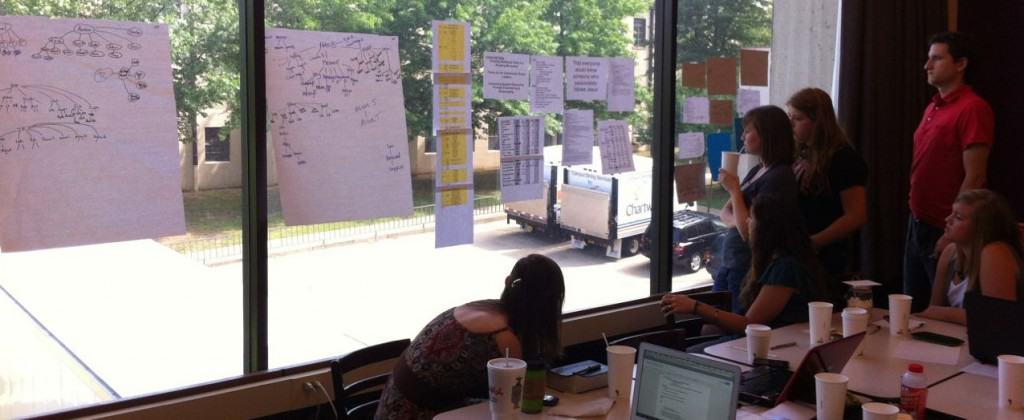As we head into the final weeks of the fall semester in college ministry, it’s a great time to step back and evaluate.
I wanted to share a few resources that have been helpful for our team as we seek to figure out if we have set our ladder against the right wall; to figure out what we should be focused on in the spring, and beyond.
- “The All Staff eval is SUPER short. It’ll take you 5-7 minutes.
- The Cru Team Eval (AIA doesn’t need to do) will take a little longer – maybe 30 minutes”
- We ask each of our staff to do the first part of this eval with each person they disciple: Evaluating the Quality of Your Discipleship (I believe this was developed by Roger Hershey). The second half of the Discipleship eval is good for each staff to do as they think through everyone they are discipling:  Which of your disciples is presently multiplying? And of those who are not multiplying, what are the barriers?
- Cru Press Green (via Collegiate Collective!) has a great set of Eval questions
Day 1 of Planning:
Goal of week – To chart our course for the near future. To set our direction. And to be totally prepared to get started when we get back on day before classes start — Mon, Jan. 18We spend the semester furiously climbing a ladderPlanning is a time to stop climbing and assess whether our ladder is leaning against the right wall, to re-evaluate where we’ve been and whether we are headed in the right direction“The organizations that matter are busy being run by people who figure out what to do next” — Seth Godin
- The first 6 weeks of Spring mapped out (and broadstrokes for whole Spring)
- A thorough plan for each Critical Path Step for the spring
- Winter Conference details nailed down (campus times, etc)
- Leadership Retreat at beginning of year planned out
- Our evangelistic strategy mapped out for Spring
- Connecting with one another
A ministry can mean you’re doing great stuff – connecting the lost to Jesus and seeing lives change.But if we stop there, we just have a ministryA ministry is content with haphazard, dead end, life change.Dead end in that students rarely multiply their lives.Haphazard in that we’re content with seeing random students experience life change but they never are called to work together to a greater purpose, a mission, a cohesive vision for something bigger than themselvesA movement is going somewhere together through multiplicationSpecifically – a ministry becomes a movement when people begin to multiply their lives into others AND they are moving somewhere togetherNot just scattershot. But multiplication in a particular direction. Specifically for us, our vision is that everyone on campus would know someone who passionately follows Christ. So we want students multiplying their lives until everyone on campus hears about Christ from a friend.
Brainstorm: Where do we want to be by 2020 [for frame of reference, our previous 5 year plan)?
You have put more joy in my heart
than they have when their grain and wine abound.
In peace I will both lie down and sleep;
for you alone, O Lord, make me dwell in safety.CH Mackintosh in his commentary on Exodus:
“The one who will present Christ to others must be occupied with Christ for himself. Happy is the one who ministers in this way, whatever be the success or reception of his ministry. For should his ministry fail to attract attention, to command influence or to produce apparent results, he has his sweet retreat and his unfailing portion in Christ of which nothing can deprive him. Whereas the person who is merely feeding upon the fruits of his ministry, who delight in the gratification which it affords or the attention & interest which it commands, is like a mere pipe conveying water to others while retaining only rust for himself. This is a most deplorable condition to be in, and yet it’s the actual condition of every servant who is more occupied with his work and its results than with the Master and His glory.”
Paul David Tripp has said, “It is very tempting to try to get your identity from your ministry success.” And the opposite is true as well — it’s very tempting to let ministry “failure” define you and shape your trust in God.I’ll let Tripp continue to preach (from his excellent book Dangerous Calling).
“Because you have a secure identity as a child of God, you don’t need to seek identity from the success of your ministry. You can do this because your standing with God is not based on your performance but on the perfect obedience of Christ. You need to preach these truths to yourself daily, because in ministry you either seek to get identity from your ministry or stand firm and secure in the identity you have been given in Christ.”
Day 2 of Planning:
So the spring is the time to get your “reaching-freshmen-team” together. And to build consensus that we MUST reach freshmen.
And all this happens largely by raising up as many Community Group Leaders as possible.
So everything you do in the spring should contribute to assembling this team of leaders (tomorrow I’ll share some of the changes we made to be more focused on this with our spring).
- #1 goal = getting students signed up to be CG leaders
- January = getting people into CG
- February = Discipleship/identifying future multipliers
- March = Getting CG leaders for fall
Based on current reality, what do we need to do?
Day 3 of Planning:
Leadership Retreat Plan
- Leadership Retreat – coed, FUN, elements of content, overnight, just for leaders, Free!
- What do we want to keep doing?What do we need to change?
What you could spend time on:
- Vision Dinner- Table Host and Silent Auction
- MPD
- New Staff Development
- Meet with students
- Winter Conference job
- Any Admin wrap up
- Take your vacation time if you have not already





